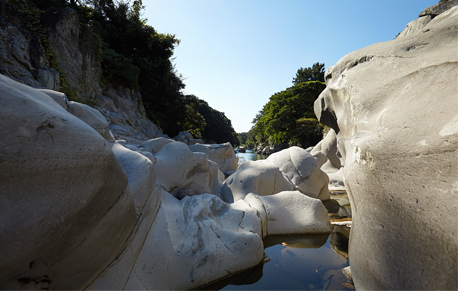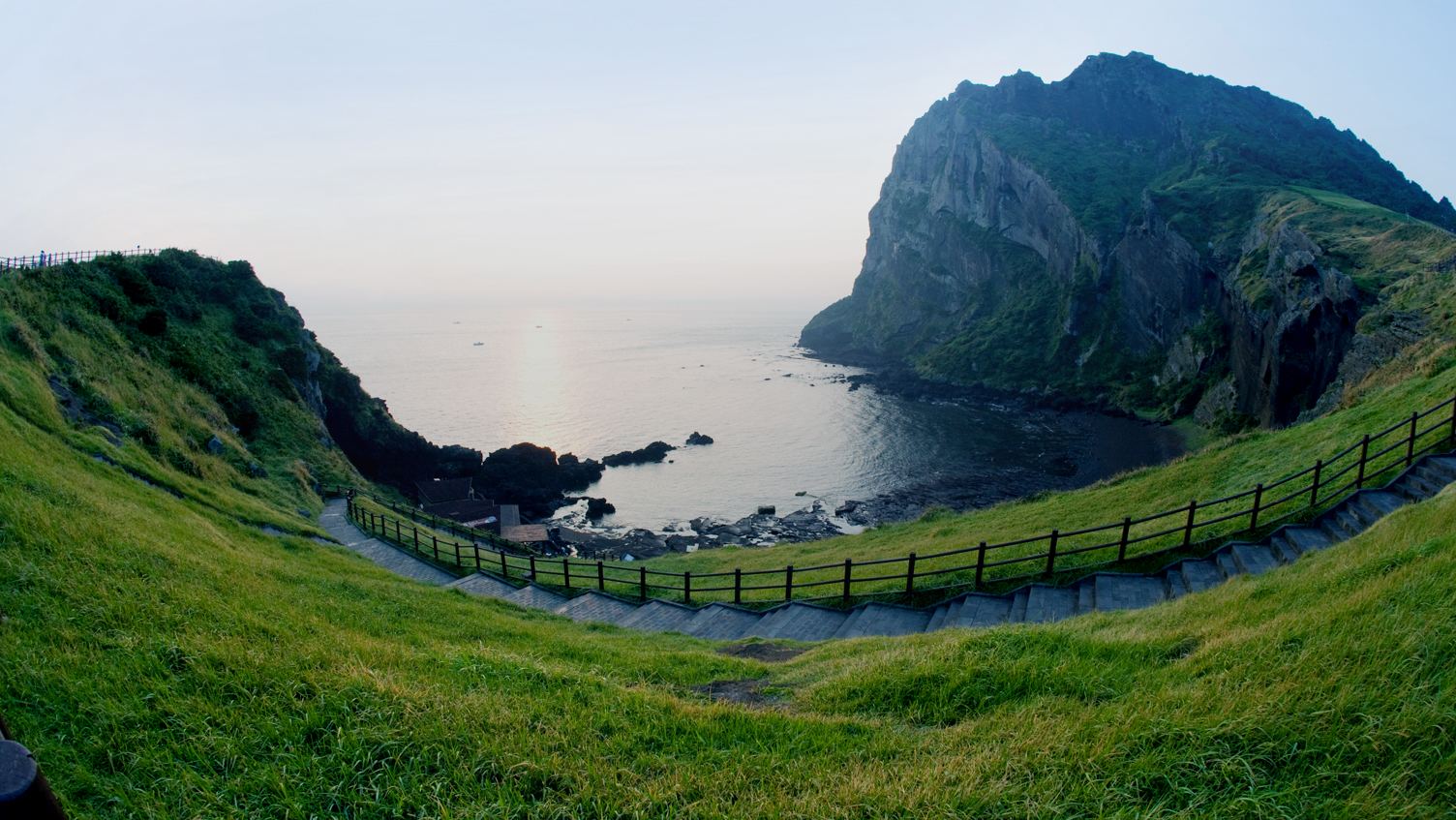
The mysteriously beautiful colors of ocean, tropical trees, and Jeju tangerine trees often create a feeling of taking an overseas trip at an exotic island.
Pay a visit to the famous tourist destinations with natural blessing:
The Jusangjeolli(columnar jointing) at Jungmun Daepo Coast and Soesokkak Estuary, both located in Seogwipo City.
Island with World-Famous Natural Landscapes
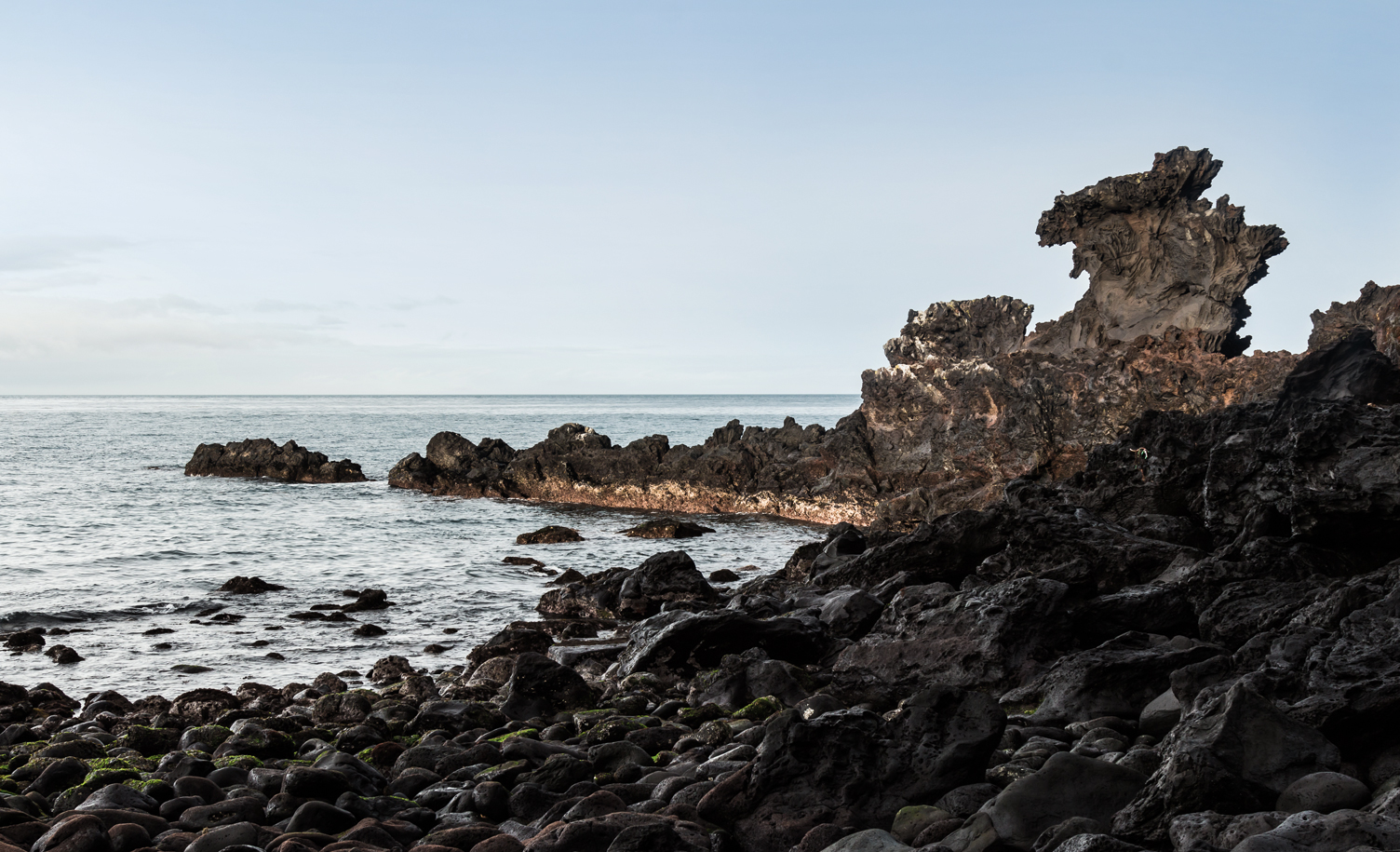
A wide variety of caves, waterfalls, and other geographical features created by the volcanic activities highlight the globally praised natural asset of Jeju Island.

All four seasons are beautiful in Jeju, but summer may be the most spectacular since tourists can enjoy the beautiful colors of water all across the island. The combination of black rocks with pores and the crystal-clear seawater surrounding the island is a long-time recipe for infatuating visitors. Jeju’s charms are also found in its unique natural landscapes. Among others, Columnar Jointing at Jungmun Daepo Coast and Soesokkak Estuary attract tourists year round.
Blessed Natural Scenery Crafted by God
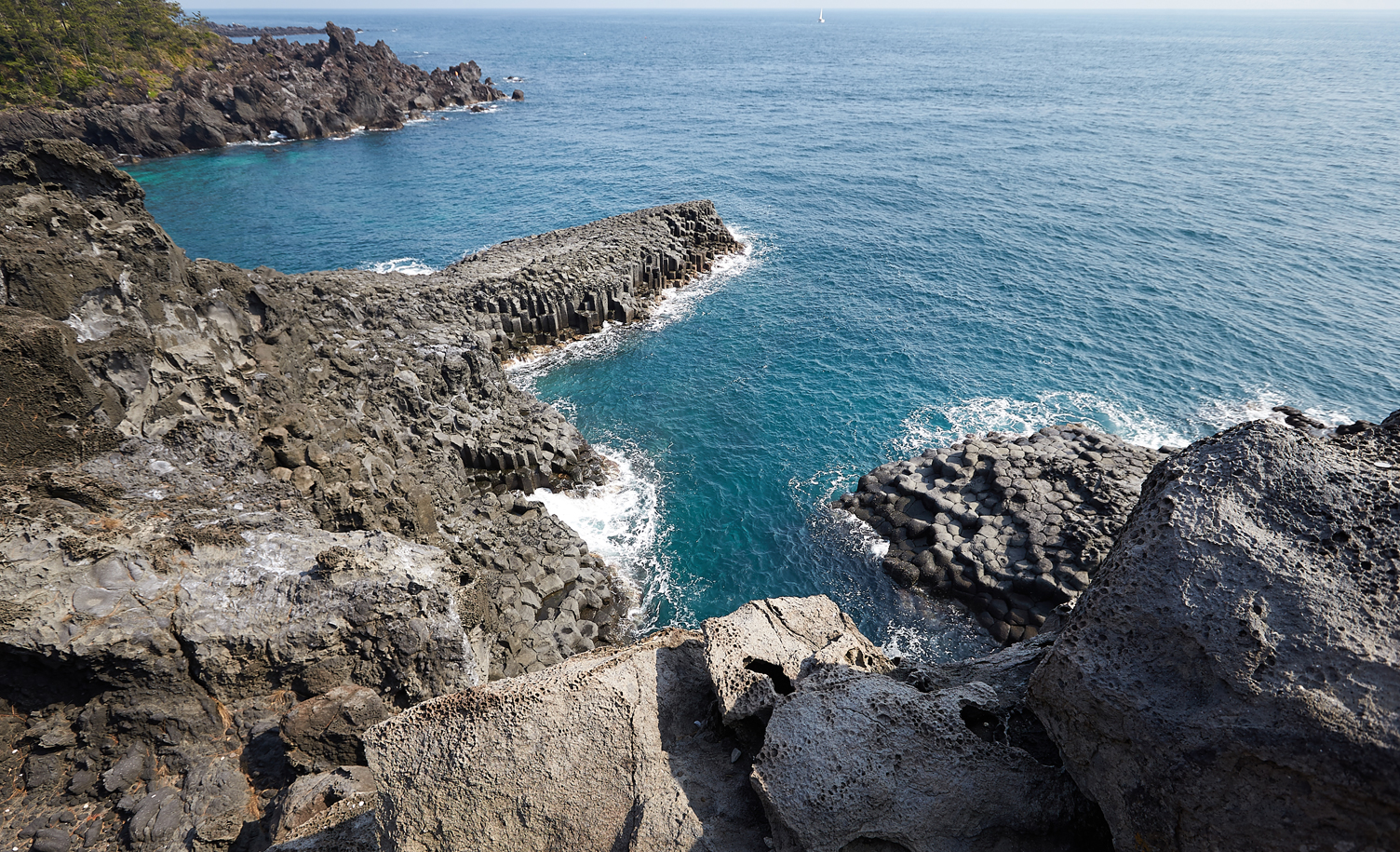
Vertical joints alongside the coast stretching 1.75km make a magnificent picture. The columnar jointing was made as tetragonal or hexagonal pillar when lava cooled rapidly after contacting the seawater. The jointing at Daepo Coast is standing 30-40 meters high over a one-kilometer stretch, which is larger than any other columnar joints in Korea. The variety of shapes of those columns evoke an image of blocks elaborately crafted and piled by God.
The byname “Palace of Gods” originated from the myth about Seolmun Daehalmang, the mythological goddess who was tallest and strongest in the world and who spaded up the soil from the sea bottom to make Mt. Hallasan. According to the myth, the goddess once told people in Jeju to make her a pair of underwear, promising that she would then build a bridge to the land. The Jeju people began to collect silk within the island to weave underwear, but the goddess was so big that they could not complete a pair.

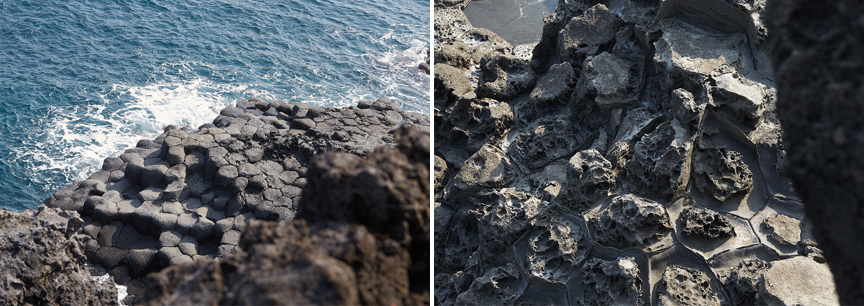
Infuriated, the goddess made some unique picturesque places enjoyable only by the Great Jade Emperor, and the myth says that one of these places is Columnar Jointing at Daepo Coast. The extraordinary skills of the goddess must have certainly satisfied the Emperor’s taste, and the amazing landscape still emanates a magical atmosphere coupled with the mystical nature.
Becoming a Hermit Floating on Water
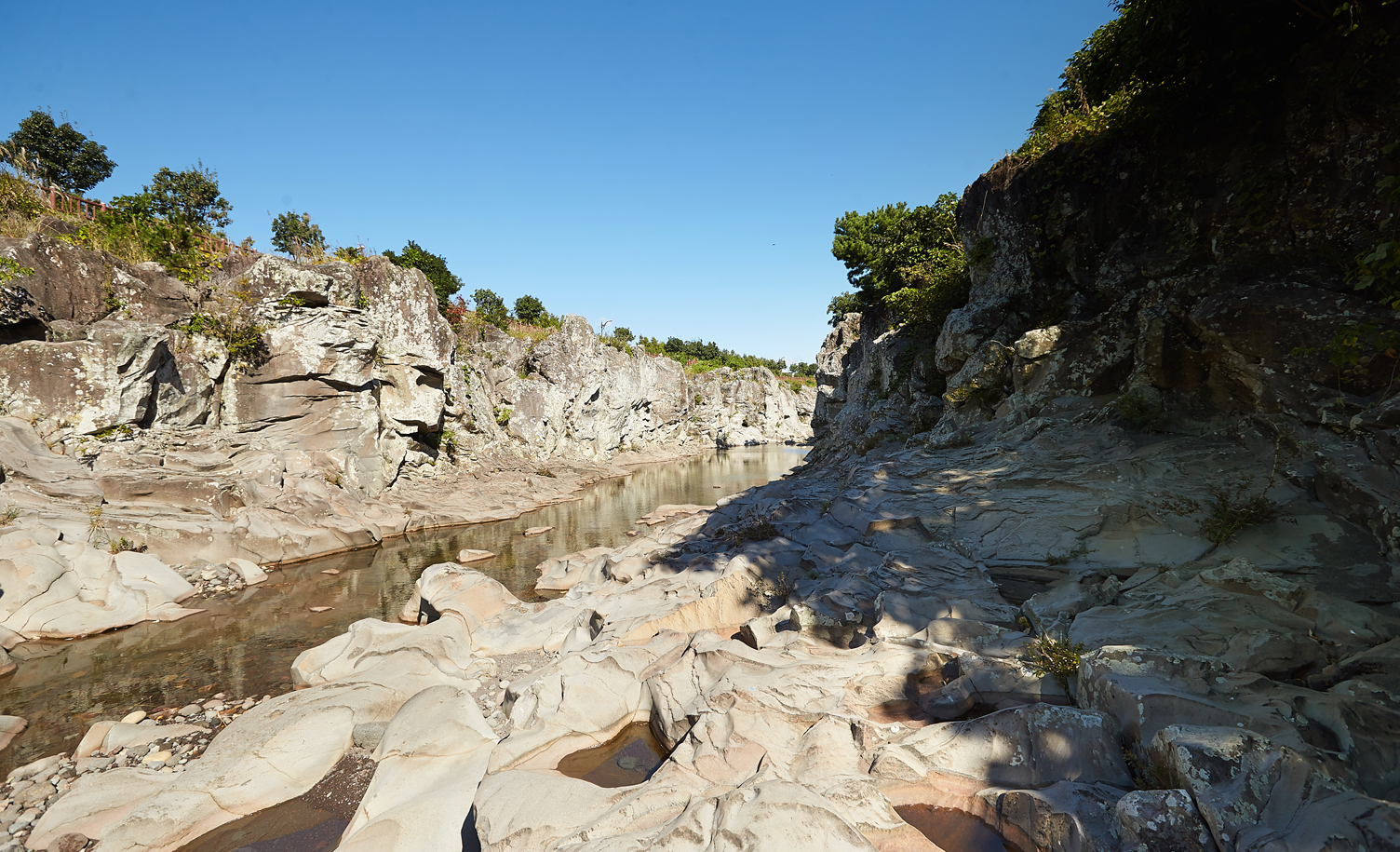
Leaving the mysterious jointing behind, tourists can head towards another famous destination in Seogwipo City: Soesokkak Estuary. Created by the lava flowing from the volcano, the estuary has deep valleys containing the water coming from Baengnokdam Lake on the top of Mt. Hallasan, completing extremely exotic scenery for Korea. This place used to be a port for nearby villagers and still has floating Teu, traditional flat wooden rafts. To carry people from the valley’s entrance to the inner area, the rafts are operated by pulling ropes. With capacity for about ten passengers, Teu will enable a carefree sightseeing experience throughout Soesokkak.
A transparent kayak is another way to enjoy the scenery. Kayaking on the clean water running through the dark-green forest will be a refreshing activity, especially in summer. The people reclining on a kayak or Teu floating on the emerald-green water look like ancient hermits enjoying nature.
The boats also provide a chance to take a closer look at the natural scenery of Soesokkak. The picturesque sights of valleys and trees on both sides make a panoramic view, while below runs crystal-clear water containing a mixture of fresh water, spring water, and seawater.

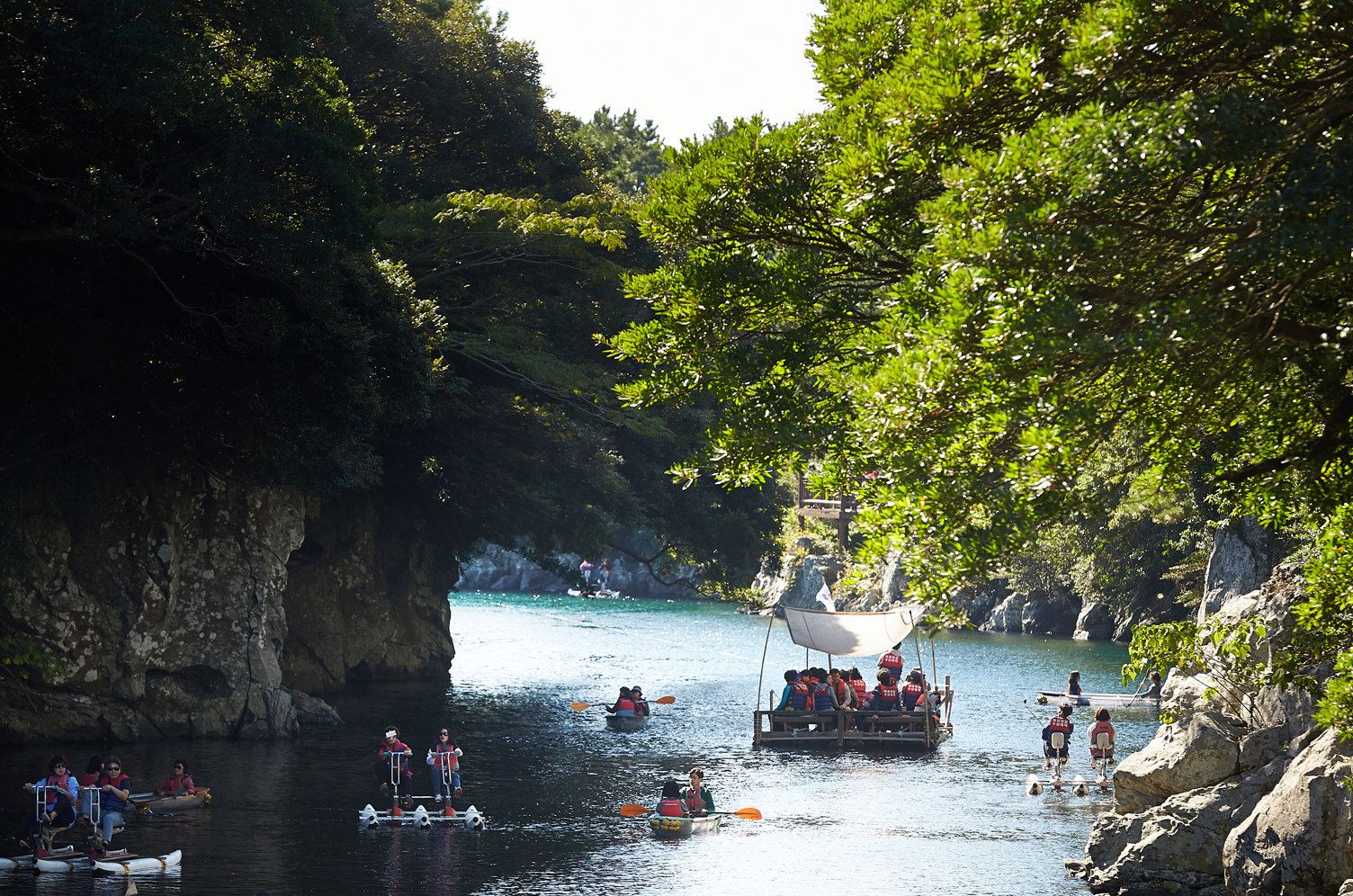
and Columnar Jointing at Daepo Coast and Soesokkak Estuary will certainly leave a lingering image to all tourists in Jeju.

